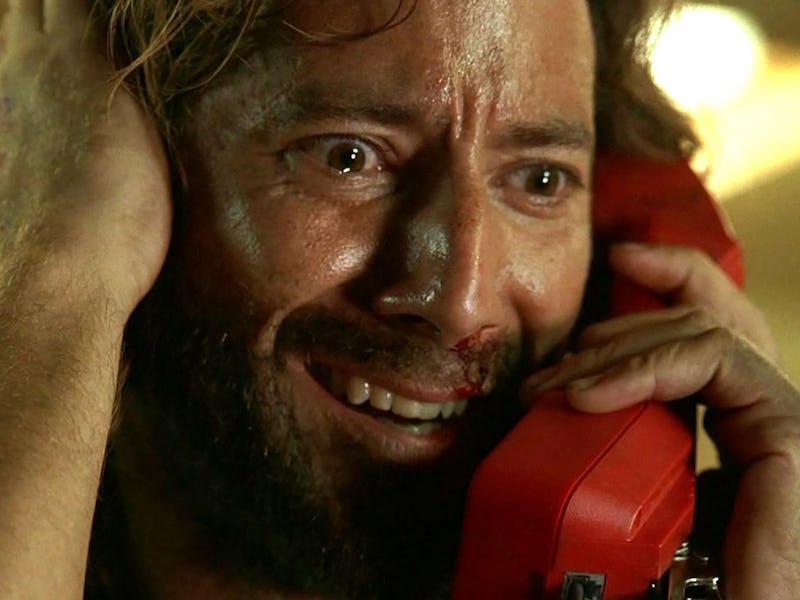Lost’s “The Constant” Was a Radical Departure From Formula — and an Instant TV Masterpiece
"If anything goes wrong, Desmond Hume will be my constant."

Sci-fi television often sits in its own bubble. Fans will passionately laud and defend its weirder, more esoteric quirks, but it’s largely divorced from the prestige TV landscape. What is an episode of Star Trek next to The Sopranos?
But occasionally, an episode of sci-fi TV can transcend the genre. Star Trek: The Original Series told a doomed time-travel love story with “The City on the Edge of Forever.” Doctor Who turned its Time Lord into a tragic romantic hero with “The Girl in the Fireplace.” And 15 years ago, Lost gave us an exquisite cosmic love story that remains, to this day, one of the best TV episodes ever made.
It may seem the secret to turning a sci-fi episode into a TV masterpiece is to throw romance and time travel in a blender, and presto: you’ve got an all-timer hour of television. But what sets “The Constant” apart from the doomed time-travel romances that came before it (and the many, many that came after) is how it cleverly weaponized the flashback formula Lost was already known for.
“Desmond, did you lose your shirt buttons again?” - Sayid, probably.
Lost’s greatest innovation (and eventually, its greatest albatross) was the flashback, a narrative device rarely used to the degree the ABC series employed it. It transformed the relatively simple story of a group of airplane crash survivors into a rich, layered character drama — albeit one with smoke monsters and polar bears.
Every episode would turn its focus to a different character, exploring whatever sad past, sad death, or sad daddy issue they were fleeing from. The show sometimes played with genre and form, but where Lost often found its best balance of sci-fi weirdness and earnest emotion was in a Desmond Hume episode.
Played by Henry Ian Cusick with an air of desperate heroism, Desmond was he of the time-trippy tragedies and the perpetually unbuttoned shirt, ushering in Lost’s highest sci-fi ambitions with his introduction in the mind-blowing Season 2 premiere. It’s no surprise that Lost’s greatest hour would be a perfect melding of the show’s flashback formula with Desmond’s particular brand of time-travel weirdness.
Written by Carlton Cuse and Damon Lindelof, the latter of whom would revisit this formula with a tremendous episode of Watchmen, “The Constant” follows Desmond and Sayid (Naveen Andrews) as they take off in the helicopter flown by Frank Lapidus (Jeff Fahey) to the mysterious freighter just off the coast of The Island. But when they’re caught in a freak storm, Desmond becomes “unstuck in time.” His consciousness from 1996 has somehow ended up in his body in 2004, and he’s terribly confused. As Desmond toggles back and forth between 1996 and 2004, he discovers that if he doesn’t find his “constant” — something (or someone) familiar to him in both times — he will die. Thus unfolds one of the greatest TV romances ever told.
Desmond wakes up in 1996.
It’s a universal story: a man unstuck in time, searching for his true love. As Entertainment Weekly’s Darren Franich points out, “The Constant” remains timeless because it draws from antiquity — think The Odyssey but with time travel. But the underrated magic of this episode is in how it evolves the Lost flashback beyond just a narrative device. Desmond’s timeslips take the place of a typical flashback. He’ll be speaking to someone in 2004 and, mid-sentence, find himself in a Scottish military barracks in 1996, or he’ll fall out of frame in 1996 and re-emerge in 2004.
This is the only time in Lost history where a character is aware the flashbacks are happening, and that those flashbacks are killing him (read into that metatext how you will). It adds a tantalizing wrinkle to this romance, which finds Desmond — after learning from the 1996 Daniel Faraday (Jeremy Davies) that he must find his constant — trying to make contact with his one true love, Penny Widmore (Sonya Walger), in both the past and the present.
For how much “The Constant” is raved about for its profundity and beauty, it’s underrated how subtly funny this episode is. Most of that is thanks to Davies’ bizarre line deliveries as Faraday. Davies plays the beleaguered scientist like a younger, hipper Doc Brown, his dialogue littered with weird pauses and elongated syllables. Combine that with Naveen Andrews’ Sayid, who rolls with all the sci-fi shenanigans and mostly seems exasperated by Desmond’s sudden fit of amnesia, and it’s just the right amount of goofiness thrown into an otherwise very serious episode.
Penny (Sonya Walger) and her comically oversized Christmas tree.
Of course, it wouldn’t work if it weren’t for the magnificent central love story between Desmond and Penny. The scene where Desmond finally calls her, intercutting between their breathless declarations of love for one another as 1996 Desmond walks away with a smile and Michael Giacchino’s swooning score swells, belongs in the echelons of the greatest TV sequences ever. But this cathartic climax owes itself to Cusick and Walger’s terrific chemistry, which seeps through in every shared prickly interaction, hung-up phone call, and loving gaze at a torn-up photograph.
They sell this timeless love story, one that transcends miles and decades of separation. It’s what makes “The Constant” one of the greatest cosmic romances of the ages.
This article was originally published on